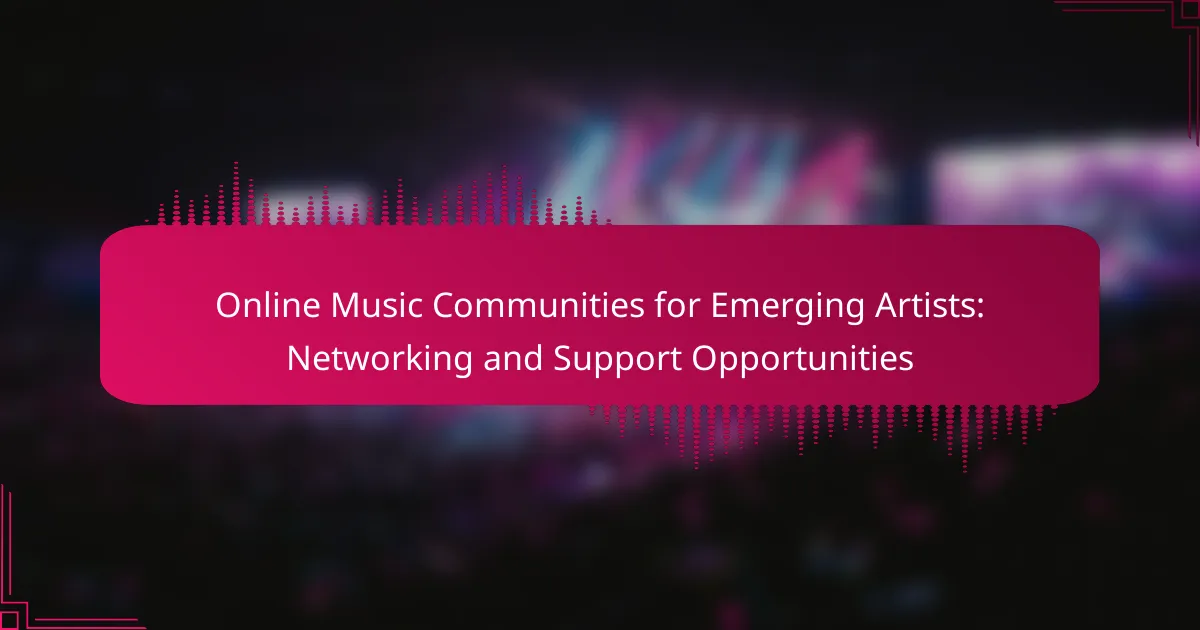Digital distribution platforms empower independent artists to reach global audiences and retain more royalties. These platforms offer user-friendly interfaces, customizable release strategies, and essential analytics tools. They also facilitate direct engagement with fans through marketing features and support for various audio formats. Key considerations include revenue share, platform reach, and unique attributes tailored to niche genres.
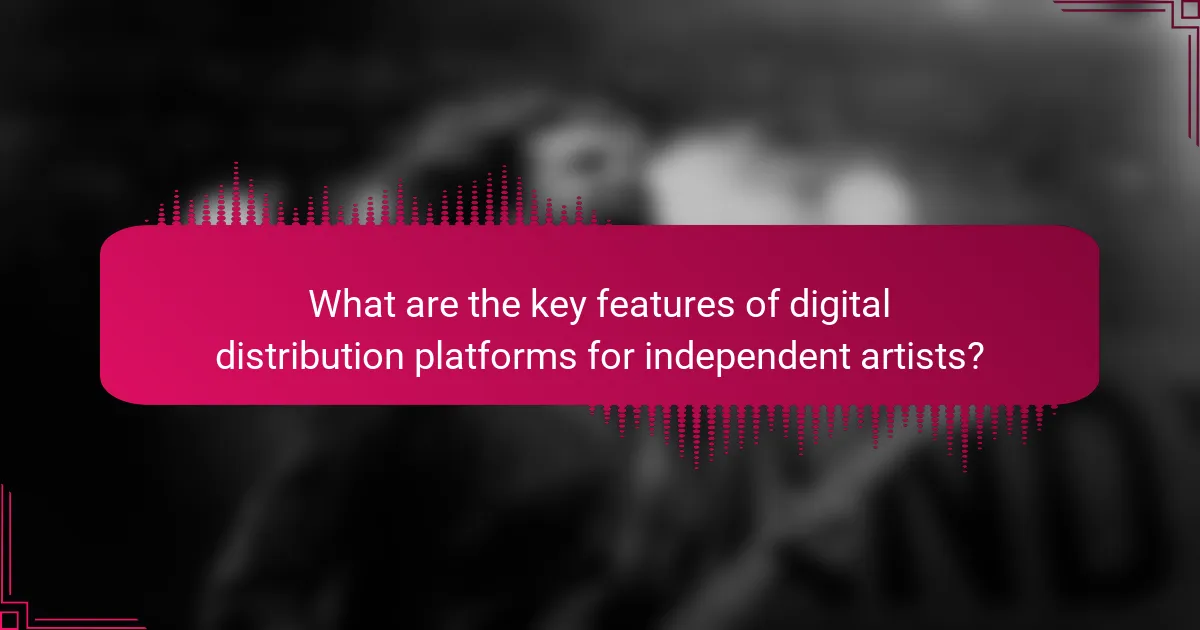
What are the key features of digital distribution platforms for independent artists?
Digital distribution platforms for independent artists offer essential features that enhance music distribution and revenue generation. Key features include user-friendly interfaces, extensive music cataloging, and analytics tools to track performance.
Platforms provide global reach, allowing artists to distribute their music to major streaming services like Spotify and Apple Music. They often include customizable release strategies, enabling artists to choose their release dates and promotional tactics. Additionally, many platforms offer royalty collection services, ensuring artists receive fair compensation for their work.
Support for various file formats is crucial, as it allows artists to upload high-quality audio files. Some platforms also provide marketing tools, such as social media integration and email campaigns, to help artists promote their music effectively. Overall, these features empower independent artists to manage their careers more efficiently and maximize their reach in the digital landscape.
How do these features enhance artist visibility and reach?
Digital distribution platforms enhance artist visibility and reach through targeted promotion, analytics, and global accessibility. These features allow artists to connect with wider audiences and optimize their marketing strategies. For example, platforms often provide data on listener demographics, enabling tailored outreach. Additionally, the ability to distribute music across multiple channels increases exposure. As a result, independent artists can build a stronger presence in the competitive music landscape.
Which platforms offer the most comprehensive feature sets?
Bandcamp, DistroKid, and TuneCore offer the most comprehensive feature sets for independent artists. Bandcamp excels in fan engagement and merchandise sales, providing artists direct access to their audience. DistroKid focuses on distribution speed and low fees, allowing artists to release music on multiple platforms efficiently. TuneCore offers extensive analytics and marketing tools, helping artists track performance and reach broader audiences. Each platform has unique attributes that cater to different artist needs, ensuring a variety of choices for digital distribution.
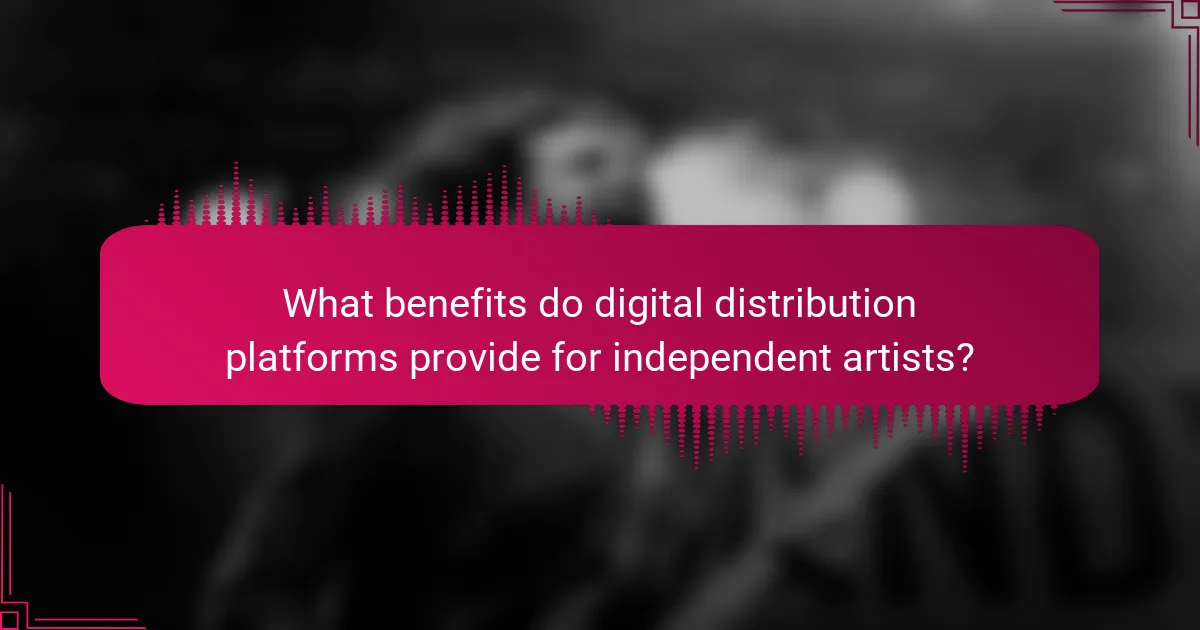
What benefits do digital distribution platforms provide for independent artists?
Digital distribution platforms provide independent artists with increased reach, control over their music, and access to valuable data insights. These platforms enable artists to distribute their work globally without the need for traditional record labels.
Key benefits include cost-effectiveness, as many platforms offer affordable distribution fees, and the ability to retain a larger percentage of royalties. Additionally, artists can engage directly with their audience through social media integration and targeted marketing tools.
Access to analytics helps artists understand listener demographics and preferences, allowing for more informed decisions about future releases and promotional strategies. Overall, digital distribution platforms empower independent artists to build their careers on their terms.
How do these benefits compare to traditional distribution methods?
Digital distribution platforms offer more cost-effective and efficient solutions compared to traditional distribution methods. They eliminate physical inventory and reduce overhead costs. Independent artists can reach global audiences instantly, unlike traditional methods that involve lengthy timelines and geographical limitations. Additionally, digital platforms provide real-time analytics, enabling artists to track engagement and sales effectively. This data-driven approach enhances marketing strategies and audience targeting, a unique advantage over traditional distribution channels.
What financial advantages can artists expect from digital distribution?
Artists can expect significant financial advantages from digital distribution, including higher profit margins and broader market reach. Digital platforms reduce overhead costs associated with physical distribution, allowing artists to retain a larger share of sales revenue. Additionally, these platforms provide access to global audiences, increasing potential sales volume. Artists can also benefit from data analytics, enabling informed marketing strategies and targeted promotions. Overall, digital distribution enhances financial opportunities for independent artists, fostering greater autonomy and sustainability in their careers.
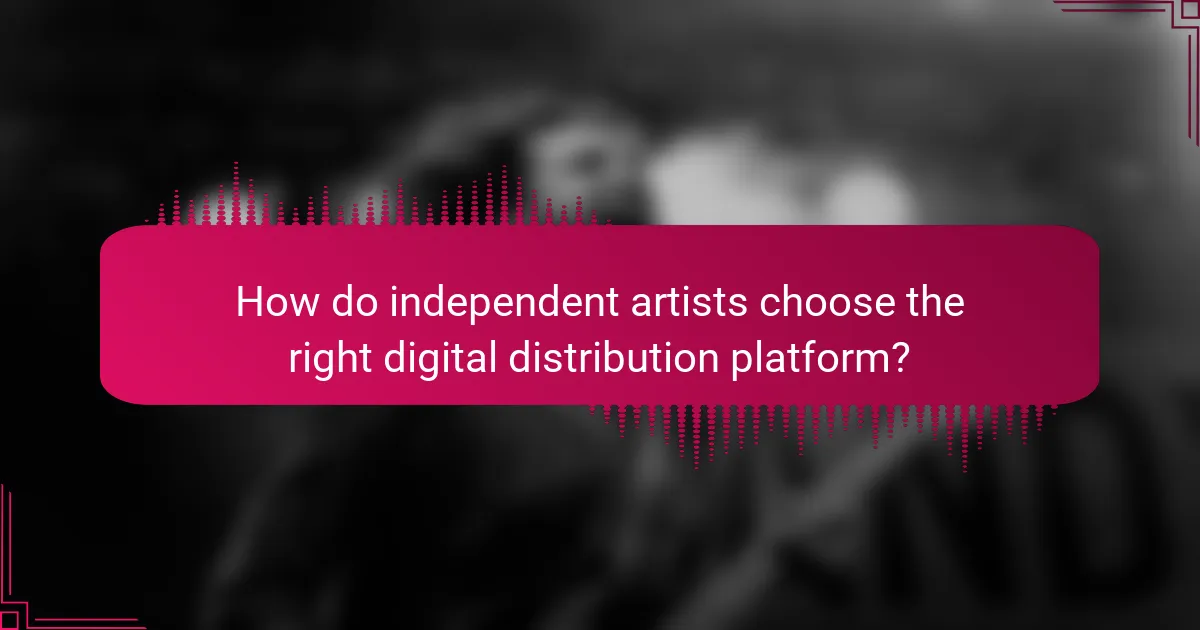
How do independent artists choose the right digital distribution platform?
Independent artists choose digital distribution platforms based on features like revenue share, reach, and ease of use. Key considerations include the platform’s ability to distribute music to major streaming services, its royalty payout rates, and any additional promotional tools offered.
Platforms such as DistroKid, TuneCore, and CD Baby provide different benefits. DistroKid offers unlimited uploads for a flat annual fee, while TuneCore charges per release but provides detailed sales reports. CD Baby is known for its one-time fee structure and additional services like physical distribution.
Artists should evaluate their specific needs, such as whether they prioritize speed of release or comprehensive analytics. The right platform enhances visibility and maximizes earnings, making it essential to choose wisely.
What criteria should artists consider when evaluating platforms?
Artists should consider features like distribution reach, royalty rates, and user interface when evaluating platforms. These criteria directly impact an artist’s ability to monetize their work effectively.
1. Distribution Reach: Assess the number of platforms and territories the service covers.
2. Royalty Rates: Compare the percentage of revenue artists receive after sales.
3. User Interface: Evaluate the ease of use for uploading and managing content.
4. Marketing Tools: Look for built-in promotional features to enhance visibility.
5. Analytics: Check for detailed performance metrics to track audience engagement.
6. Support Services: Ensure access to customer support for resolving issues.
Which platforms are favored by artists in different regions?
Independent artists favor platforms like Bandcamp, SoundCloud, and Spotify across different regions. Bandcamp is popular in North America for its artist-friendly revenue model. SoundCloud excels in Europe due to its community engagement features. Spotify leads in global reach, appealing to artists seeking wide exposure. Each platform offers unique benefits, catering to various artistic needs and regional preferences.
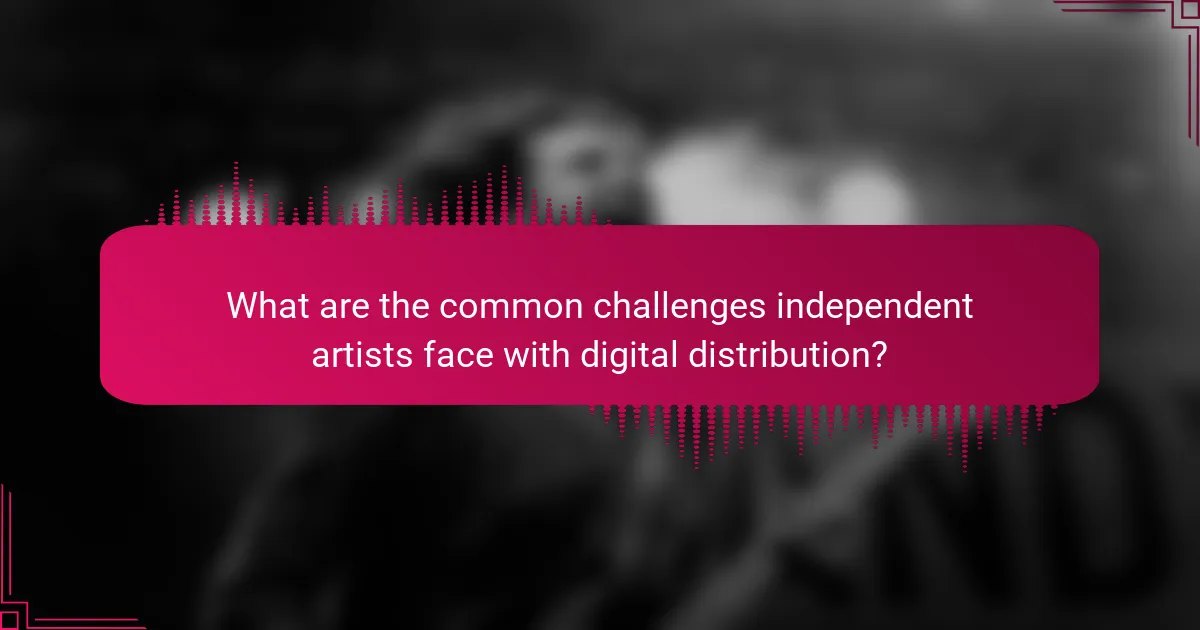
What are the common challenges independent artists face with digital distribution?
Independent artists face several challenges with digital distribution, including limited visibility, high competition, and revenue sharing. These platforms often prioritize established artists, making it hard for newcomers to gain traction. Additionally, fluctuating algorithms can affect discoverability, while complex royalty structures can reduce earnings. Navigating these obstacles requires strategic marketing and understanding platform dynamics.
How do these challenges impact an artist’s career?
Challenges in digital distribution can hinder an artist’s career by limiting exposure and revenue. Independent artists often struggle with algorithm changes that affect visibility on platforms. Additionally, competition from established artists can overshadow emerging talent. These factors may lead to reduced streaming income and fewer opportunities for collaboration. Adapting to platform features is essential for sustaining growth and engagement.
What strategies can artists employ to overcome these challenges?
Independent artists can overcome challenges by utilizing targeted digital distribution platforms. These platforms offer tools for marketing, analytics, and direct fan engagement. Artists should leverage social media integration to enhance visibility and utilize data insights to refine their strategies. Additionally, collaborating with other artists can expand reach and foster community support.

How do unique attributes of certain platforms benefit niche genres?
Unique attributes of digital distribution platforms enhance niche genres by providing tailored features that address specific audience needs. For instance, platforms like Bandcamp and SoundCloud allow independent artists to connect directly with fans, fostering community engagement. These platforms often include unique attributes such as customizable artist pages and flexible pricing options, which empower artists to showcase their work authentically. Additionally, some platforms offer rare features like crowdfunding capabilities, enabling artists to finance their projects through fan support. Overall, these specialized attributes create a supportive environment for niche genres to thrive.
What differentiates platforms that cater to specific music styles?
Platforms that cater to specific music styles differentiate primarily through their targeted features and community engagement. These platforms often provide specialized tools for genre-specific promotion, tailored analytics, and unique distribution channels. For instance, some platforms focus on electronic music, offering enhanced support for remixing and DJ tools. Others may emphasize acoustic genres, featuring high-quality audio formats and artist collaboration options. The user experience is often optimized for the specific audience, fostering a sense of community among artists and fans alike.
How do niche platforms enhance community engagement for artists?
Niche platforms enhance community engagement for artists by providing tailored spaces for interaction. These platforms foster direct connections between artists and their audiences, enabling personalized feedback and support. Features like forums, live streaming, and exclusive content create a sense of belonging. As a result, artists can cultivate loyal fan bases, leading to increased visibility and opportunities for collaboration.

What are the rare attributes of leading digital distribution platforms?
Leading digital distribution platforms offer unique attributes that enhance their appeal to independent artists. One rare attribute is advanced analytics capabilities, providing detailed insights into audience engagement and revenue streams. Another is personalized marketing tools, allowing artists to tailor promotions to specific demographics. Exclusive partnerships with streaming services can also be a rare feature, enabling artists to reach wider audiences. Lastly, flexible royalty structures that adapt to an artist’s needs are infrequently found, making these platforms particularly attractive.
Which platforms offer exclusive features that set them apart?
Several digital distribution platforms offer exclusive features that distinguish them from others. Bandcamp allows artists to set their own pricing and directly engage with fans. DistroKid provides unlimited uploads for a flat annual fee, making it cost-effective for prolific artists. SoundCloud offers unique social features, enabling artists to connect and collaborate with other creators. TuneCore focuses on global distribution, ensuring music reaches international markets. CD Baby provides physical distribution options, allowing artists to sell CDs and vinyl directly. Each platform has unique attributes that cater to different artist needs.
How can these rare attributes influence an artist’s decision?
Rare attributes can significantly influence an artist’s decision by providing unique advantages. For instance, exclusive distribution deals can enhance visibility, while advanced analytics tools can inform marketing strategies. These features help artists tailor their approach, maximizing engagement and revenue potential. Ultimately, the presence of rare attributes can distinguish a platform, making it more appealing to independent artists seeking to optimize their reach and impact.
What emerging trends in digital distribution should artists be aware of in 2025?
Artists should focus on personalized marketing, blockchain technology, and emerging distribution channels in 2025. Personalized marketing will enhance audience engagement, enabling targeted promotions based on listener preferences. Blockchain technology will ensure transparency and fair compensation, allowing artists to track their royalties accurately. Additionally, platforms integrating social media and streaming services will offer innovative ways for artists to reach fans directly, fostering community and loyalty. These trends will empower independent artists to maximize their reach and revenue in a competitive landscape.
What best practices can independent artists follow to maximize their success on digital distribution platforms?
Independent artists can maximize success on digital distribution platforms by leveraging best practices tailored to their unique needs. Focus on building a strong online presence, utilizing social media effectively, and engaging with fans directly. Consistently release high-quality content, optimize metadata for discoverability, and analyze performance metrics to refine strategies. Collaborating with other artists can expand reach and introduce new audiences. Additionally, consider using multiple platforms to diversify income streams and enhance visibility.



